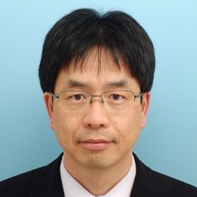Bone and Cartilage Conduction
A special issue of Audiology Research (ISSN 2039-4349).
Deadline for manuscript submissions: closed (31 May 2021) | Viewed by 41347
Special Issue Editor
Interests: otology; neurotology; audiology; hearing aid; hearing; implantation; bone conduction, cartilage conduction
Special Issues, Collections and Topics in MDPI journals
Special Issue Information
Dear Colleagues,
Signal is transmitted to the cochlea not only via air-conduction (AC) but also by vibrating the body, particularly mastoid. This conduction is referred as bone conduction (BC), and considered an important pathway in the patients with severe conduction hearing loss, such as aural atresia.
Traditionally, BC hearing aids have been used as hearing devices. Implantable devices such BAHA, Bonebridge, and Vibrant Soundbridge have been developed and become a great option in these patients. In addition, a novel hearing aids utilizing cartilage-conduction (CC) (vibrating aural cartilage for signal transmission) has been devised. This novel device improves the demerits of conventional BC hearing aids, and can be used without any surgical operation. Therefore, their use has quickly popular among the patients with aural atresia in Japan.
Recently, the medical use of this field is remarkable. Compared to AC, there are many things that remain unexplained. This special issue of BC and CC is an attempt to further our understating of sound transmission and develop its medical use. We especially encourage submissions concerning basic research on them and clinical devices utilizing these conductions.
Dr. Tadashi Nishimura
Guest Editor
Manuscript Submission Information
Manuscripts should be submitted online at www.mdpi.com by registering and logging in to this website. Once you are registered, click here to go to the submission form. Manuscripts can be submitted until the deadline. All submissions that pass pre-check are peer-reviewed. Accepted papers will be published continuously in the journal (as soon as accepted) and will be listed together on the special issue website. Research articles, review articles as well as short communications are invited. For planned papers, a title and short abstract (about 100 words) can be sent to the Editorial Office for announcement on this website.
Submitted manuscripts should not have been published previously, nor be under consideration for publication elsewhere (except conference proceedings papers). All manuscripts are thoroughly refereed through a single-blind peer-review process. A guide for authors and other relevant information for submission of manuscripts is available on the Instructions for Authors page. Audiology Research is an international peer-reviewed open access semimonthly journal published by MDPI.
Please visit the Instructions for Authors page before submitting a manuscript. The Article Processing Charge (APC) for publication in this open access journal is 1400 CHF (Swiss Francs). Submitted papers should be well formatted and use good English. Authors may use MDPI's English editing service prior to publication or during author revisions.
Keywords
- Bone conducition
- Cartilage conduction
- Hearing aid
- BAHA
- Bonebridge
- Vibrant Soundbridge
- Implant
- Aural Atresia
- Conductive hearing loss
- Single side deafness






